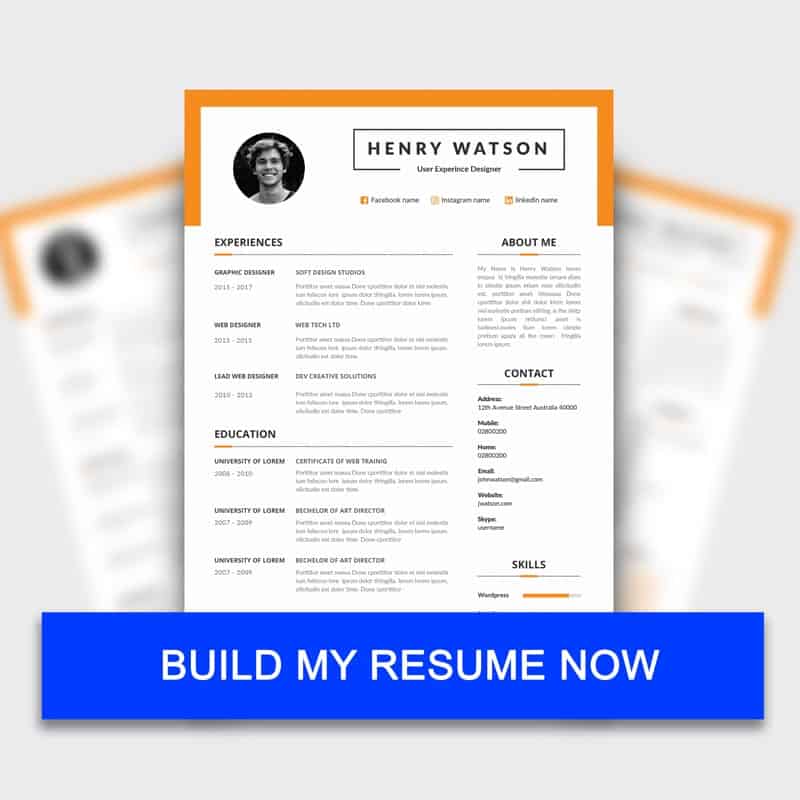Applying for a job? You’ve probably heard the advice plenty of times to tailor your resume for the position because it makes your resume to stand out from the numerous resumes already present with the recruiter by giving it a personal touch.
But, you might not know exactly how to put it into action. What does tailoring your resume actually involve? How many changes do you need to make? What content should you be focusing on?
Although it might sound like a lot of work, but it’s really quite manageable. Here are a few ideas to get you started.
Actually, Read and Try to Understand the Job You’re Applying For
Most candidates will see a job title they like, skim through the requirements and excitedly send their resume over without even double-checking their resume to make sure they have highlighted all the relevant experience.
So, do first things first: Sit down with a highlighter and really read the job description. Go through and highlight the points that seem important (not only the ones that are mentioned repeatedly but also anything that’s slightly out of the ordinary) and the points that you could speak to with your experience and skills.
This is always the step one for the reason that you need to think from the perspective of the recruiter.
Choose the Right Keywords
Choosing and adding the right keywords is crucial in the process of tailoring your resume. Any time you see repeated phrases or keywords across offers and profiles, there is a good chance that it is a skill that the hiring manager will find indispensable.
Another good way to think of skills is to divide them up into three categories:
-
Job-related Skills: You have to have these skills to do the job.
Example: Operating a particular piece of machinery.
-
Transferable Skills: These are skills that you can use in lots of different work environments.
- Example: Your ability to use Microsoft Office.
-
Adaptive Skills: These are the survival skills that you develop to enhance basic human interactions in everyday life.
- Example: Mediation
But keep in mind that the hiring manager doesn’t expect you to have every single skill listed in the job description.
Demonstrate how you’ve used these skills before in past jobs
Not only identifying your skills is important, but also you should know how to list them in your resume.
for example, instead of writing: “Management Skills.” Write: “Management of Large Teams (100+ people)” or Managed a team of more than 100 people capable of delivering projects with significant cost savings of up to 10% per project.
It has the added benefit of allowing the recruiter to imagine you achieving the same results for them.
Make Your First Point Immediately Relevant
The first role on your CV is very important because it’s the first example of your work that recruiters will see, so they place a great deal of value on it.
Take your resume, find the experience that would make recruiter most excited about your application, and rework the document so that’s what’s at the top. Maybe it’s your current position, or maybe it’s some specialized certifications or the freelance work you do on the side. Whatever it is, make it the first section of your resume.
And yes, even if it’s not the most recent. There’s no rule that says your first section must be “Work Experience.” Tailoring your resume means finding what is most relevant, creating a section for it, and filling it up with experience or qualifications that will catch a hiring manager’s eye. If that means mixing “Work Experience,” creating a “Marketing and Social Media Experience” section, then throwing everything else in an “Additional Experience” section, then so be it.
Use Bullets Even for Less Relevant Experiences
Try using numbers and achievements to illustrate your use of these skills. Adding numbers will also make it easier for the recruiter to locate them in your resume.
From the job description, you’ll likely find more than just the technical qualifications needed to complete the job. Strong communication skills, ability to work in a team and other soft skills are probably listed as well. So, while your tutoring experience might not be directly related to the sales position you’re interested in, you can definitely still highlight some of the soft skills that both positions require. And by doing so using bullets will have a more positive impact.
Add a Spotlighting Effect With Numbers and Details
Using numbers and details in various sections can definitely help you to get the attention of the hirer.
For example, If the job description asks for someone with “account management” skills, don’t just list “account management” in a bullet list. It tells the employer nothing. Instead, use Managed 27 accounts that generated $1.2 million in revenue in the 2015 fiscal year. Closed 3 new accounts, resulting in $400,000 of new business.
It tells the employer:
- How many accounts did you manage? (27).
- The financial data/ information related to account management. Be discreet. Don’t share sensitive financial information if you’re not authorized to do so.
- That you have the ability to bring in new business – something that every business wants an account manager to do.
Now, after taking care of about points to make your personalized tailored resume that is more appropriate for the job offer you need to,
Make Sure You’ve Done a Good Job
Once you’ve finished tailoring your resume to the job description, you can see how well they match by dropping your resume into a cloud generator. By using a cloud generator, you will be able to see which words are most prominent in your resume. If the words that appear are not skills or are not words you want to be remembered by, you should tweak your resume so that you use important words more often.
You can use Jobscan’s online resume analysis tool to make sure all of your keywords are optimized for the job description.
The tool allows you to drop both your job description and your tailored resume into an ATS simulator that compares the two documents. It will tell you how much your resume matches the job offer (80% or better is ideal).
Even if your resume isn’t going to be scanned via ATS, using a site like Jobscan will at least give you an idea of how well you’ve tailored your resume to match the job description.
Tailoring your resume does take time and diligence. So many minor changes can frustrate a job seeker. But minor changes can have major benefits. It can also show the recruiter in six seconds or less that your resume is relevant and in the right place.
So, don’t miss out on an opportunity to give hiring managers exactly what they want.

